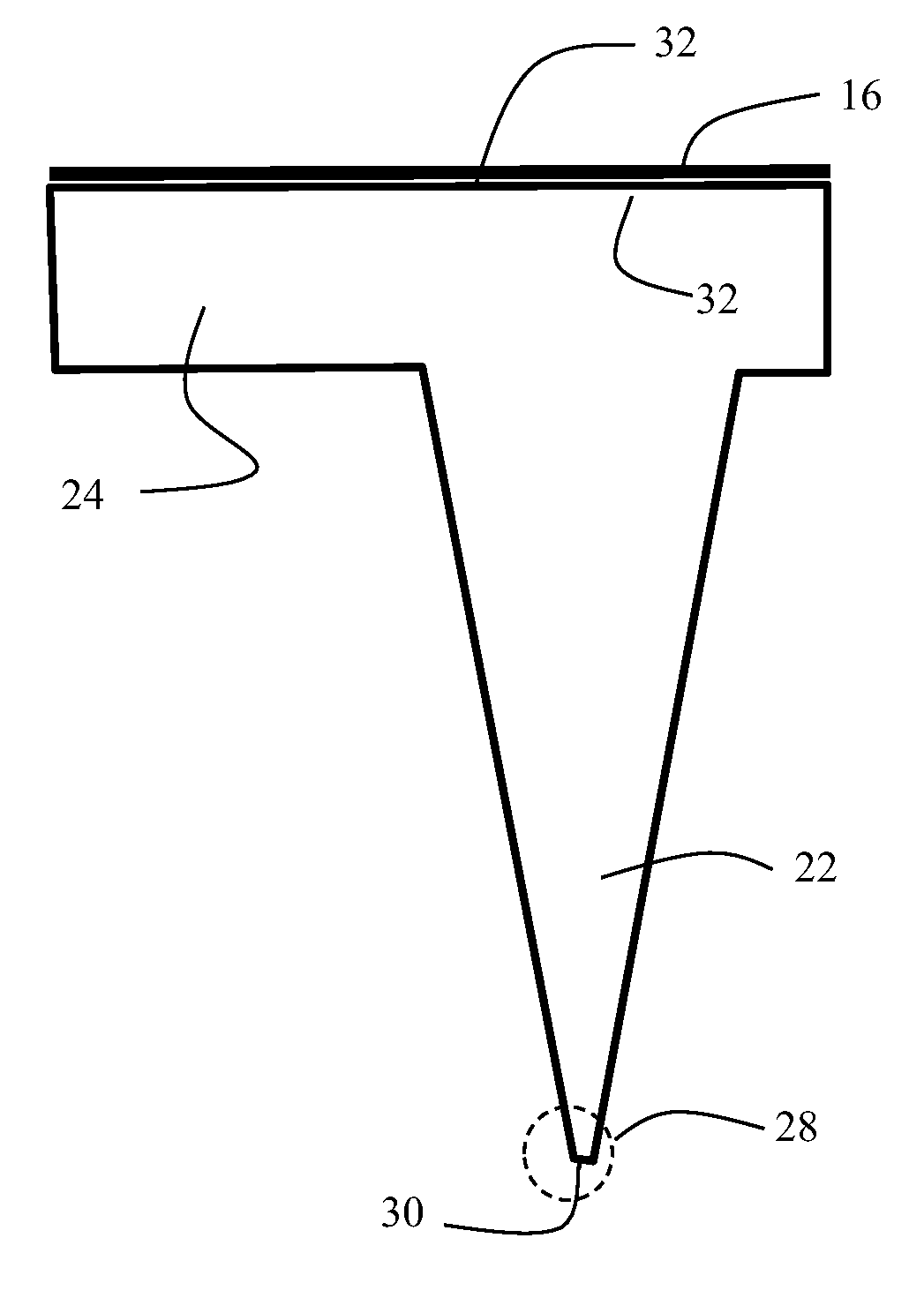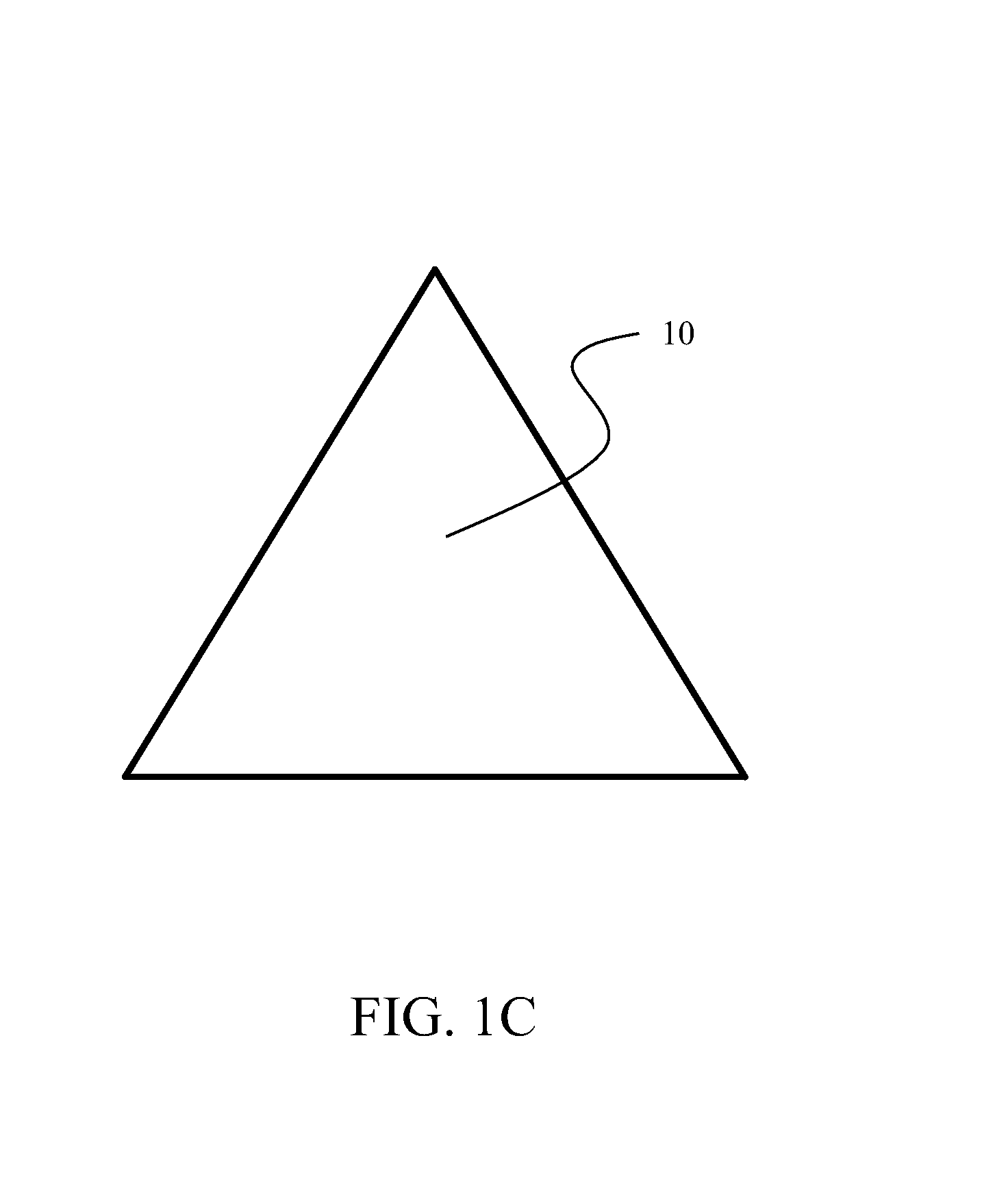Apparatus and method for atomic force, near-field scanning optical microscopy
a near-field scanning and optical microscopy technology, applied in the field of high-resolution optical microscopy, can solve the problems of limiting the spatial resolution of an optical microscope, reducing the effective wavelength of reducing the speed of light with a high-refractive index material, so as to achieve the effect of limited spatial resolution improvement of immersion techniques, and limiting the spatial resolution of optical microscopes
- Summary
- Abstract
- Description
- Claims
- Application Information
AI Technical Summary
Benefits of technology
Problems solved by technology
Method used
Image
Examples
Embodiment Construction
[0066]The embodiments described herein provide a first element where light is converted from free space propagation to near-field confinement. The near-field optic converts the free space beam with a diameter of several wavelengths to a diffraction limited spot size while simultaneously providing small semi-aperture and ease of manipulation. A high refractive index semiconductor waveguide with a tapered section disposed at the end of a cantilever accomplishes this spatial confinement up the ultimate diffraction limit with minimal angular semi-aperture and near unity efficiency.
[0067]Referring to the drawings, FIG. 1A shows a standard tetrahedral silicon AFM probe, with a cantilever 1 and a tip 2. This standard silicon AFM probe design is not intrinsically useful for optical microscopy because the top surface is not orthogonal to the tetrahedral axis thereby leading to total internal reflection instead of external refraction. It also strongly couples light from the tip 2 into the can...
PUM
| Property | Measurement | Unit |
|---|---|---|
| refractive index | aaaaa | aaaaa |
| thickness | aaaaa | aaaaa |
| refractive index | aaaaa | aaaaa |
Abstract
Description
Claims
Application Information
 Login to View More
Login to View More - R&D
- Intellectual Property
- Life Sciences
- Materials
- Tech Scout
- Unparalleled Data Quality
- Higher Quality Content
- 60% Fewer Hallucinations
Browse by: Latest US Patents, China's latest patents, Technical Efficacy Thesaurus, Application Domain, Technology Topic, Popular Technical Reports.
© 2025 PatSnap. All rights reserved.Legal|Privacy policy|Modern Slavery Act Transparency Statement|Sitemap|About US| Contact US: help@patsnap.com



